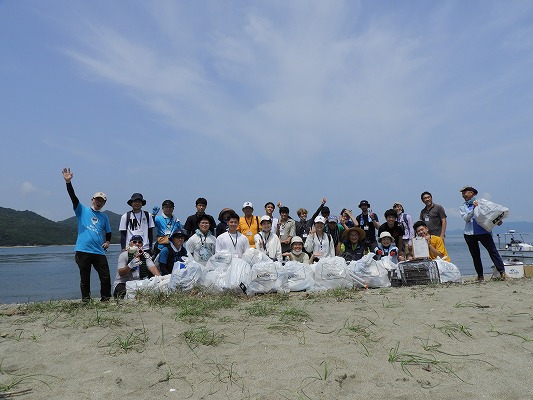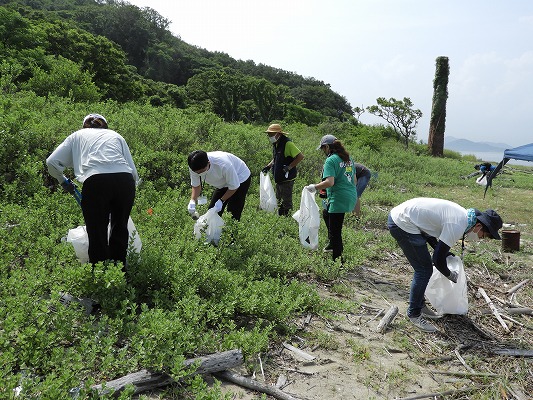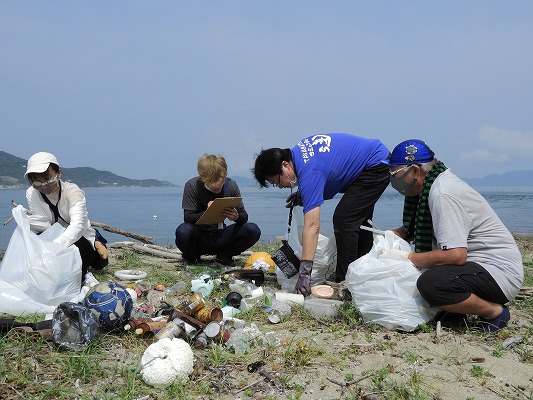2022年7月10日(日)、インターナショナルオフィスは瀬戸内圏研究センターと連携し、鎌野海岸のすぐ沖合にある高島で環境清掃と海洋ごみ調査を実施しました。この島には、以前はレンガ作りを生業とする家族が住んでいましたが、もう何十年も無人島となっています。
島への移動には、瀬戸内圏研究センターマリンステーション保有の船と海上タクシーの2隻を使用しました。
清掃・調査には、本学学生9名(台湾、タイ、ブラジル、メキシコ、ブルンジ、日本出身)や他のボランティア合せて約30名が参加し、4つのチームによって行われました。
4つのチームは、約31袋(1袋40L)、90Kg超の海ごみを回収することができました。
回収物の上位5位は、ペットボトル(364)、硬質プラスチック破片(214)、プラスチック食品容器(190)、日用雑貨(127)、ペットボトルキャップ(96)でした。
参加したブラジル出身留学生からの感想を以下に紹介します。
「日本ではペットボトルが大量に捨てられています。海岸を清掃している際、海に流されたペットボトルを大量に発見しました。日本にはたくさんの自動販売機があり、毎日数百万本のペットボトルが捨てられています。水筒を持ち歩かず、毎日これらの自動販売機で飲料を購入する人が多く、それがさらにごみを増やしています。このような現実を一部反映したのが、高島で見つかったごみだったのです。」
On 10th July 2022 (Sun), the International Office in conjunction with Seto Inland Sea Regional Research Center conducted an environmental cleanup and survey on marine garbage at Takashima, an island just offshore of Kamano Beach.
This island used to be inhabited by a family making bricks but has been uninhabited for many decades now.
There was a total of almost 30 participants, including 9 students from Taiwan, Thailand, Brazil, Mexico, Burundi, and Japan.
The cleanup and survey were conducted via four teams, comprising of students and other volunteers.
We used two boats, one hired and the other belonging to Kagawa University Marine Station, to ferry the participants to the island.
The four teams managed to collect about 31 bags (each 40 liters) of marine garbage, weighing over 90 kilograms.
The top five items collected were pet bottles (364), hard broken plastic pieces (214), plastic food containers (190), miscellaneous daily items (127), and pet bottle caps (96).
As in many other similar events, students offered their impressions of the event. We introduced one such impression below, penned by an exchange student from Brazil.
‘A significant amount of plastic bottles are discarded in Japan. We discovered a significant quantity of plastic bottles that the sea had swept away while we were cleaning the beach. There are a lot of vending machines all around Japan, and everyday millions of pet bottles are thrown away. Many people choose to purchase beverages from these machines daily rather than carrying their own water bottle, which creates even more rubbish. This is a little reflection of these realities was the trash that was discovered on Takashima Island.’


